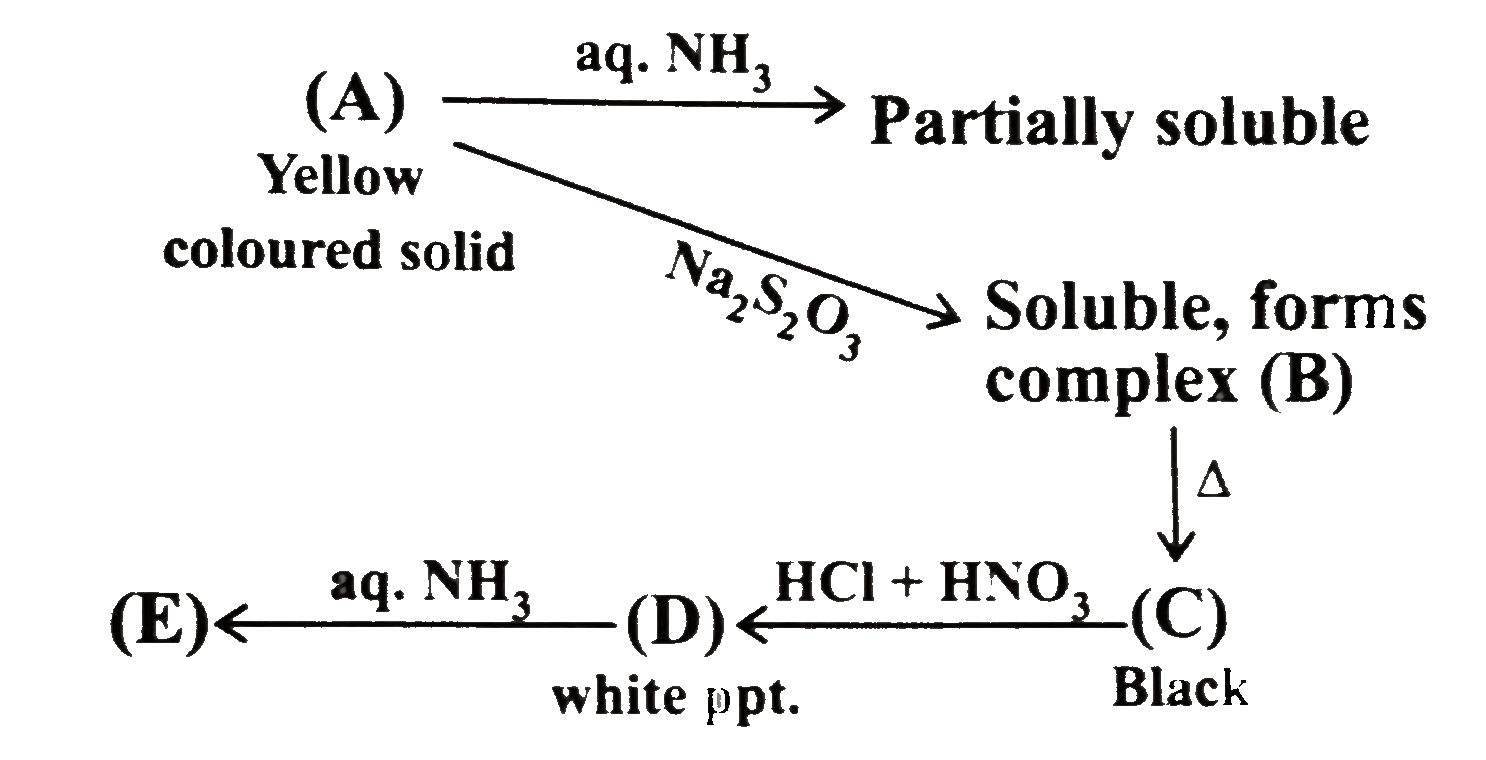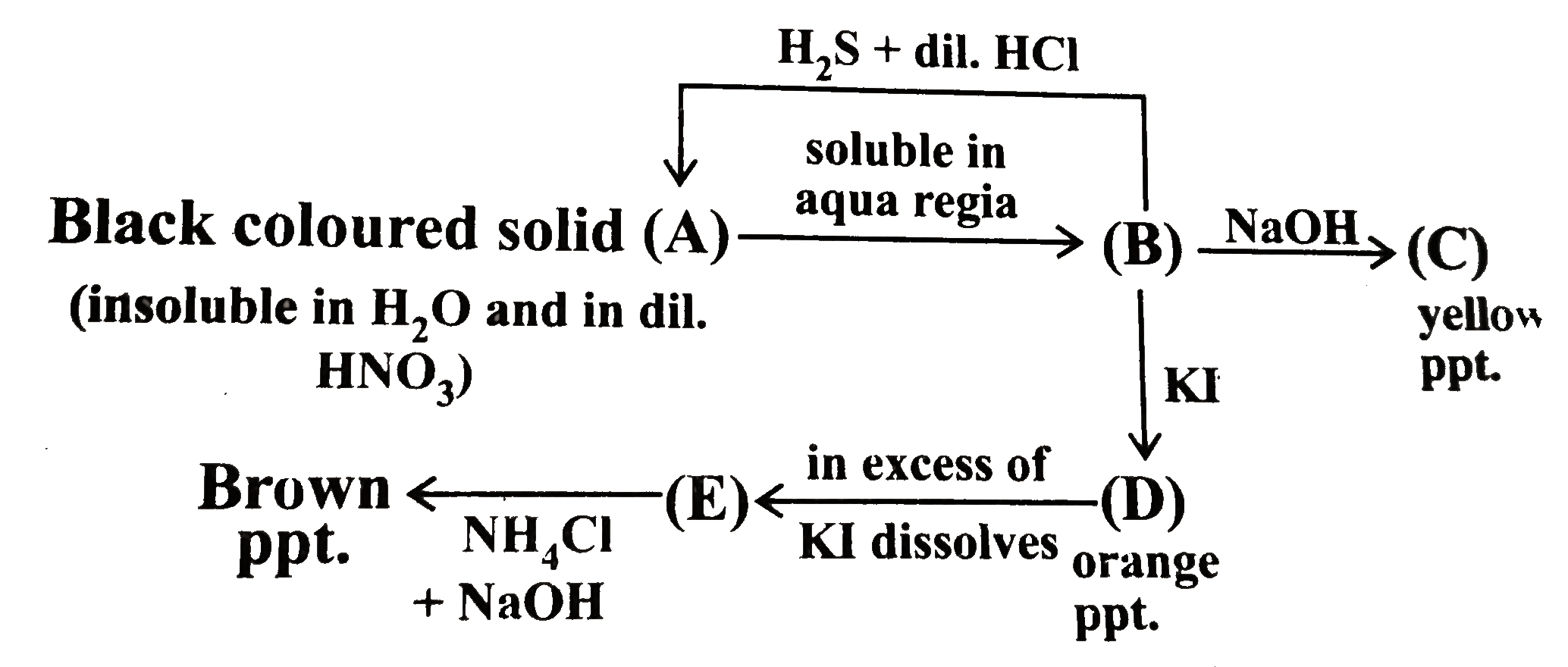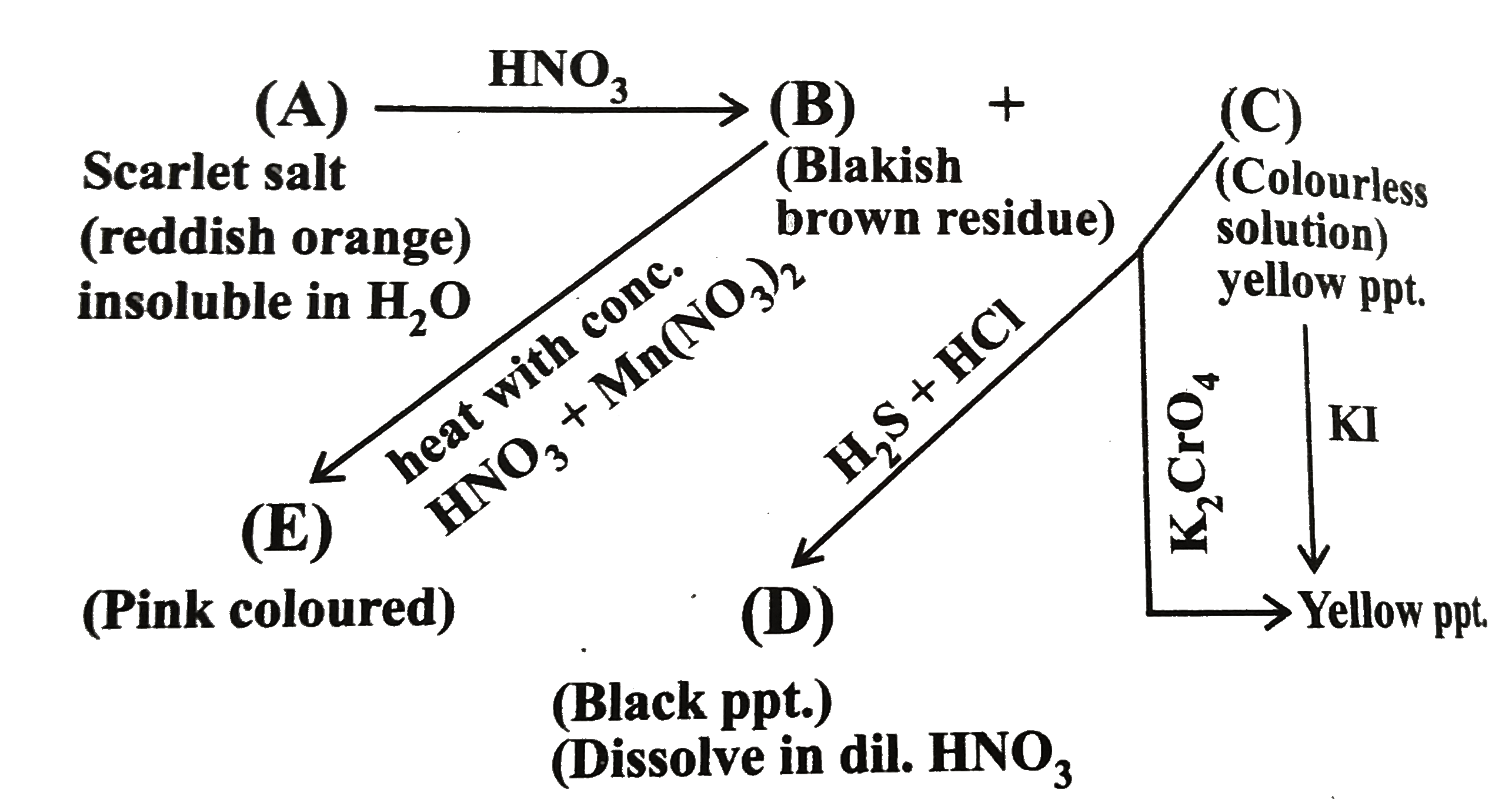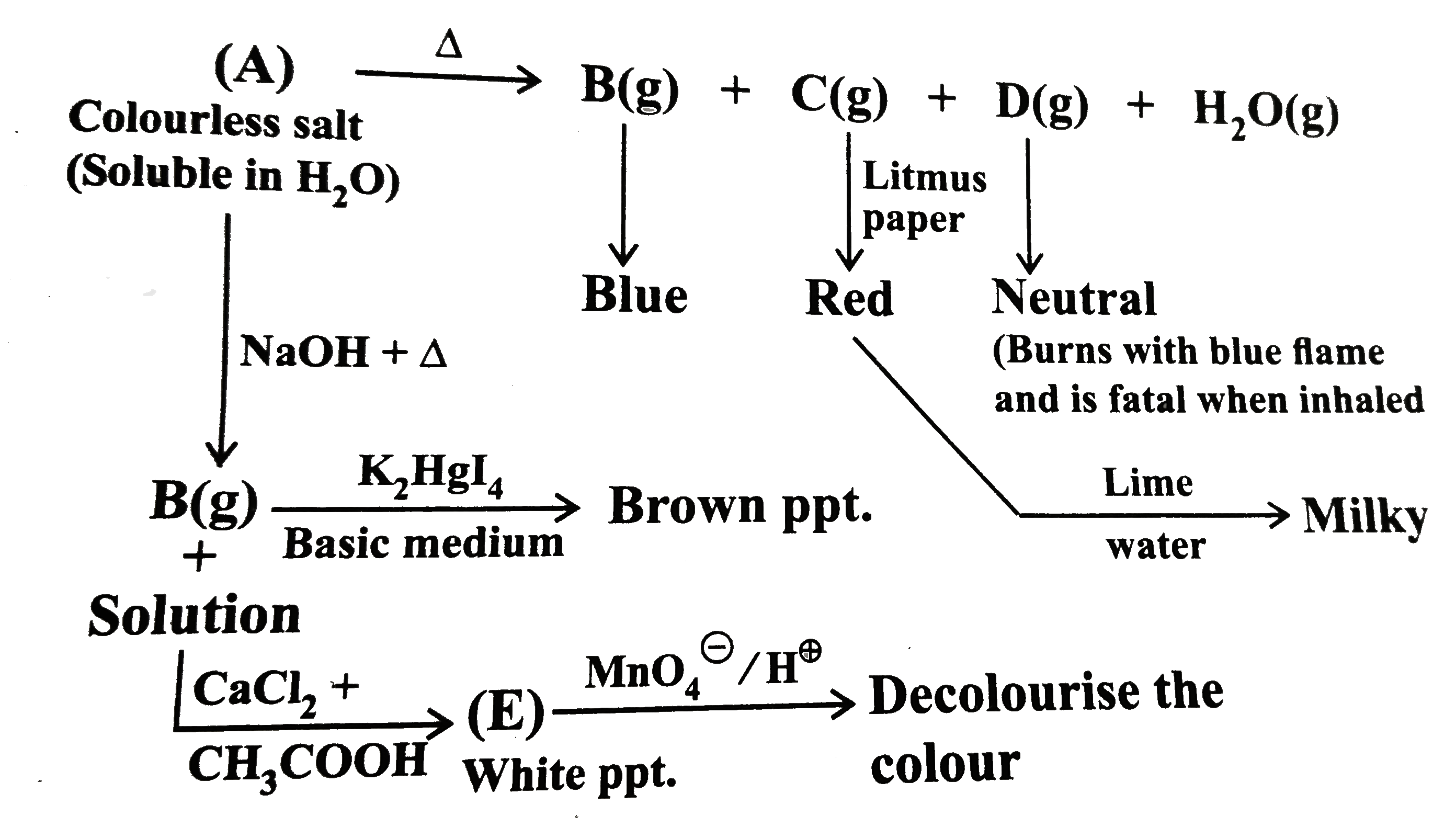Complete Solutions to Solved Example of chapter QUALITATIVE INORGANIC SALT ANALYSIS of Class 12 book with complete answers and questions
| Class 12 | CHEMISTRY |
| Chapter | QUALITATIVE INORGANIC SALT ANALYSIS |
| CENGAGE CHEMISTRY | Solved Example |
| Number Of Questions | 11 |
| Academic Year | 2023-24 |
 View Solution
View Solution View Solution
View Solution(A) as important laboratory reagent, turn red litmus blue imparts golden yellow colour in flame and is a gas precipitating agent, (A) reacts with `Zn` or AI forming `H_(2)`gas(A) gives while ppt with `ZnCI_(2) or AICI_(3)` but ppt . Diwsolves in exces of (A), what is (A) and explain reaction
View SolutionIdentify (A) based on the following facts:
a. (A) redues `HgCI_(2)` solution to white ppt changing to grey
b.(A) turn `FeCI_(3)` yellow coloured solution to green
c. (A) gives while ppt `NaOH` soluble in excess of `NaOH`
d. (A) gives yellow dirty ppt ,on passing `H_(2)S` gas in yellow ammonium salphide `(YAS)`
e. (A) gives chromyl chloride testView SolutionIdentify A to E
 View Solution
View SolutionIdentify A to E
 View Solution
View SolutionName one common reagent that can precipitate or react and differentate following pairs:
a. `Ag^(Theta)` and `B^(2+)` b. `Cu^(2+) , Pb^(2+)`
c. `I^(Theta)` and `CI^(Theta)` d. `I^(Theta)` and `Br^(Theta)`
e. `SO_(3)^(2-)` and `SO_(4)^(2-)` i. `Fe^(3+) , Cu^(2+)`
g. `Co^(2+)` and `Cu^(2+)`View SolutionWhat single reagent solution (including `H_(2)O)` could be used to effect the separation of the following of solides?
a. `NaOH and Fe(OH)_(3)`
b. `Ni(OH)_(2) and Fe(OH)_(2)`
c. `Cr_(2)O_(3) and Fe(OH)_(3)`
d. `MnS` and `CuS`
e. `AgCI and AgI`View SolutionA solution may contain any of the following ions: `Fe^(2+),Ni^(2+), Cr^(3+),Zn^(2+),Mn^(2+)` Based on the experiment and result therein , which of the ions would be present? Indicate any wrong infornation if any…..
a. The original solution is treated with with `(NH_(4)),S`(a subestitate is obtain
b. The ppt for (a) dissolves in regain
c. The fitrate after sepration ppt in (a) is treated with `NaOH` and `H_(2)O_(2)` A dark ppt , is separate filtrate is colourless.
e. The solution from (d) is turned with aq `NH_(3)` A dark ppt forms
f. The ppt from (e) is solution in `HCI` (aq) and solution develops an latense red colour when treated with `SCN^(Theta)` (aq)View SolutionIdentify A to E
 View Solution
View SolutionIdentify (A) to (G) in the following scheme and name the process.
`CaCO_(3) overset(Delta) to (A) + (B) gas , (A) + H_(2)O rarr (C )`
`(C )+B rarr CaCO_(3) + H_(2)O (D) +(C ) overset(Delta) to (E ) gas`
`(E ) + H_(2)O + (B) rarr (F) , NaCI + (F) rarr (G) + (D)`
`(G) overset(Delta) to Na_(3)CO_(3) + H_(2)O + (B)`View Solution
Solved Example questions and complete solutions for chapter QUALITATIVE INORGANIC SALT ANALYSIS of CENGAGE CHEMISTRY (HINGLISH) of Class 12
All Exercises from CENGAGE CHEMISTRY Class 12 CHEMISTRY QUALITATIVE INORGANIC SALT ANALYSIS
- Ex 8.1
- Ex 8.2
- Exercises (Assertion-Reasion)
- Exercises (Fill In The Blanks)
- Exercises (Integer) (Naming And Terminology
- Exercises (Linked Comprehension)
- Exercises (Multiple Correct) Part-A (Analysis Of Anions)
- Exercises (Multiple Correct) Part-B (Analysis Of Cations)
- Exercises (Multiple Correct) Part-C(Dry Test)
- Exercises (Multiple Correct) Part-D (Miscellaneous)
- Exercises (Single Correct) Part-A (Analysis Of Anions)
- Exercises (Single Correct) Part-B(Dry Test)
- Exercises (Single Correct) Part-C (Analysis Of Cations)
- Exercises (Single Correct) Part-D (Miscellaneous)
- Exercises (True And False )
- Exercises Archives (Assertion-Reasoning)
- Exercises Archives (Fill In The Blanks Ype)
- Exercises Archives (Integer)
- Exercises Archives (Linked Comprehension)
- Exercises Archives (Multiple Correct)
- Exercises Archives (Single Correct)
- Exercises Archives (Subjective)
- Exercises Archives (True/False)
- Illiustration
- Solved Example
- Viva Voce Questions And Part-A (Analysis Of Anions)
- Viva Voce Questions And Part-B (Dry Tests)
- Viva Voce Questions And Part-C (Analysis Of Cations)
